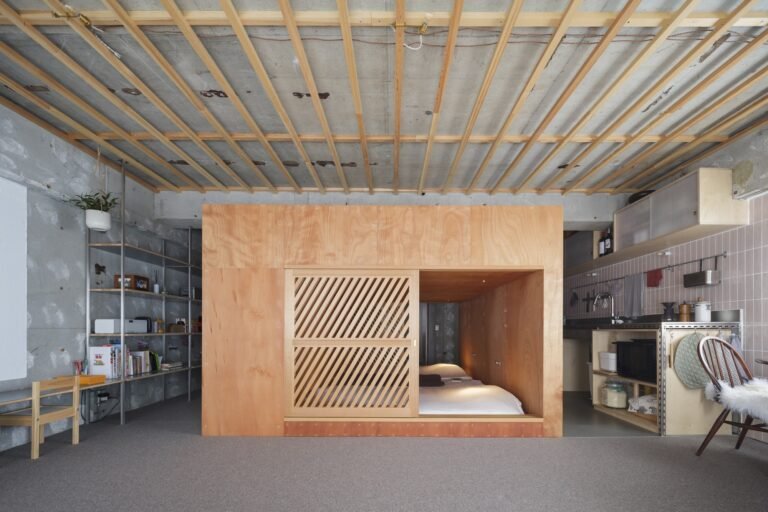Images of a future from the recent past: Remembering the Nakagin Capsule Tower
The slow deconstruction of Kisho Kurokawa’s Nakagin Capsule Tower in Tokyo began on April 12 and will continue through the end of the year. The tower’s demolition is no surprise, as its problems were well known from the start. That it survived half a century is a feat in and of itself. Kurokawa showed us a version of a possible pod world that proved to be immensely influential, for better and worse. While we shouldn’t repeat the tower’s mistakes, its optimism about alternative futures is a legacy worth noting.
To mark this moment, AN gathered remembrances in text and image from those whose trajectories brought them in close contact with the building. Below and in the gallery above is the second in our five-part series on the Nakagin Capsule Tower, a contribution in photographs and words from Chicago-based visual artist Noritaka Minami.

When I visited the Nakagin Capsule Tower for the first time in August 2010, I had no intention of making it the subject of a project that would last over a decade. Many who have experienced the building in person understand its strange but undeniable magnetism. I was captivated by the building the moment I entered a capsule whose original futuristic interior was mostly intact. Despite the overwhelming heat and humidity inside, I became fixated on the large circular window across the room. The natural light that came through the circular window illuminated the capsule in such a haunting way.
I began to document the state of individual capsules as a response to this potential disappearance. I wanted to examine what became of an architecture that first opened as a radical prototype for a new mode of living in the city and how this vision of the future appeared in retrospect. At first, every unit’s interior was nearly identical, owing to the capsule architecture’s mass production, but I discovered that while some of the units retained original details, many others displayed a variety of modifications that had been performed over the years. There were even capsules that were no longer habitable because of neglect and the limits of the building’s design.
In my photographs of the capsule tower, the various conditions of the units pointed to the passage of time while also showcasing how Kurokawa’s vision of the future aged. My pictures captured the individuality present in each capsule; the accumulation of objects attests to the lives of the people who resided there. The photographs also capture how the building persevered, even as the rest of the city followed a different path and rendered it obsolete.
The Nakagin Capsule Tower ultimately achieved a significance that its architect could not have foreseen half a century ago. It became something other than what Metabolist futurism promised, taking on a life of its own. For a time, the building lived a unique and irreplaceable existence in the city.
Noritaka Minami, a visual artist based in Chicago, photographed the Nakagin Capsule Tower from 2010 to 2021.


